Paul Simon
Tempo
A Rowman & Littlefield Music Series on Rock, Pop, and Culture
Series Editor: Scott Calhoun
Tempo: A Rowman & Littlefield Music Series on Rock, Pop, and Culture offers titles that explore rock and popular music through the lens of social and cultural history, revealing the dynamic relationship between musicians, music, and their milieu. Like other major art forms, rock and pop music comment on their cultural, political, and even economic situation, reflecting the technological advances, psychological concerns, religious feelings, and artistic trends of their times. Contributions to the Tempo series are the ideal introduction to major pop and rock artists and genres.
Bob Dylan: American Troubadour, by Donald Brown
Bon Jovi: Americas Ultimate Band, by Margaret Olson
British Invasion: The Crosscurrents of Musical Influence, by Simon Philo
Bruce Springsteen: American Poet and Prophet, by Donald L. Deardorff II
Patti Smith: Americas Punk Rock Rhapsodist, by Eric Wendell
Paul Simon: An American Tune, by Cornel Bonca
Ska: The Rhythm of Liberation, by Heather Augustyn
An American Tune
Cornel Bonca
ROWMAN & LITTLEFIELD
Lanham Boulder New York London
Published by Rowman & Littlefield
A wholly owned subsidiary of The Rowman & Littlefield Publishing Group, Inc.
4501 Forbes Boulevard, Suite 200, Lanham, Maryland 20706
www.rowman.com
16 Carlisle Street, London W1D 3BT, United Kingdom
Copyright 2015 by Cornel Bonca
All rights reserved. No part of this book may be reproduced in any form or by any electronic or mechanical means, including information storage and retrieval systems, without written permission from the publisher, except by a reviewer who may quote passages in a review.
British Library Cataloguing in Publication Information Available
Library of Congress Cataloging-in-Publication Data
Bonca, Cornel, 1958
Paul Simon : an American tune / Cornel Bonca.
pages cm. (Tempo : a Rowman & Littlefield music series on rock, pop, and culture)
Includes bibliographical references and index.
ISBN 978-0-8108-8481-6 (cloth : alk. paper) ISBN 978-0-8108-8482-3 (ebook)
1. Simon, Paul, 1941 Criticism and interpretation. 2. Popular musicUnited StatesHistory and criticism. I. Title.
ML420.S563B66 2015
782.42164092dc23
2014023319
 TM The paper used in this publication meets the minimum requirements of American National Standard for Information Sciences Permanence of Paper for Printed Library Materials, ANSI/NISO Z39.48-1992.
TM The paper used in this publication meets the minimum requirements of American National Standard for Information Sciences Permanence of Paper for Printed Library Materials, ANSI/NISO Z39.48-1992.
Printed in the United States of America
This is for Angel
and
Alexey,
Nicolai, and
Annalise.
Series Editors Foreword
Paul Simon: An American Tune
As a fellow English major, Im relieved to know Paul Simon not only found work upon his graduation but also was able to use his degree to do what he liked. Hes made a living in the world of words, wrangling sound, sense, and meaning from them. I feel a swell of pride, too, for his having made it. And boy, has he made it. Pop icon. Consummate lyricist. Poet. Nearly unparalleled in popular song for his voice and virtuosity as a musician, Simon is one of the few narrators to have kept pace with Bob Dylans quality of comment on the American story. Hes a hero to the bookish set, the introverts, the readers of rhythm and rhyme, who believe in figurative language, and that by speakingby soundingwe can bring into existence beautiful questions and answers to save us all.
From modernist beginnings as the Jewish boy growing up middle class in mid-twentieth-century Queens, Simon seemingly had only his own ambition, self-awareness, and physical stature to overcome. A fathers approval set him in motion and his mothers devotion gave young Paul the right stuff to become half of Simon & Garfunkel and then much more as a soloist. Witty, wry, and a quick study of pop song forms, Simon sailed through the streets of Greenwich Village in the 1960s to embark on a career as a pop-folk hero in the 1970s. Taking a turn in the 1980s to explore the African and Caribbean roots of American pop and rock swelled him to even greater heights even before he had shown signs of sinking.
Simons steady hand on the wheel of his professional career, though, is not all from his confidence as a navigator. Theres as much the grip of trepidation in him borne out of steering into storms of personal uncertainties. Simon has the modernists attraction to ambiguity, the mystics search for eternity, the optimists hope of victory, and the romantics embrace of melancholy. Most of his songbook features all four dispositions in sublimely intricate arrangements. A standout example is American Tune, a song in which he took both the melody and meaning of the chorale in Bachs St. Matthew Passion, popularly known as O Sacred Head, Now Wounded, in order to state his own resolve to keep sailing on. Simon was thirty-two when he released the song in 1973 on his second solo album after the breakup of Simon & Garfunkel. Unbeknownst to everyone at the time, he wasnt even midway through his odyssey.
Simons sensitivities and insecurities have been well-attuned from the start of his career. He could deliver a song full of youthful spirit and American zest, which he often did as a young songwriter and performer, particularly when working with Art Garfunkel. Yet inevitably, naturally, a song from beyond his years followed close behind, wondering if he had not, instead, lost something precious. There has always been as much Prufrock in Simons love songs as pure pop, which speaks volumes about what we most want from the singer-songwriter in light of Simons long and lustrous career. We may be a proud, confident nation, with an inestimable wealth of resources both raw and refined, but we often worry if we have, in fact, missed the plot of life. We too often feel alone and fear we have, indeed, been asking the wrong questions.
How encouraging it is, then, to hear Simon sing what courses through our hearts and bones, too. We are not the sole sailor on this ship. In his voice, in his exquisite tenor, still strong at the age of seventy, our humanity sounds more lovely. We are reminded there is enough mysterious beauty to encourage us for the rest of our days. Paul Simons great gift is in making the journey for answers a more hopeful voyage.
Scott Calhoun
Timeline
World and Cultural Events | Paul Simons Life and Career |
December 7, 1941: Japan attacks Pearl Harbor; United States enters World War II against Axis Powers. |
October 13, 1941: Paul Simon born in Newark, New Jersey. |
Spring 1945: Nazi concentration camps discovered by Allied troops. Germany surrenders; Adolf Hitler dies in Berlin bunker. | 1945: Simon family moves to Kew Gardens, Queens, New York. |
August 6 and 8, 1945: United States drops atomic bombs on Hiroshima and Nagasaki. |
August 14, 1945: Japan surrenders. World War II ends. Cold War begins with Soviet Union. |
1950: Beginning of McCarthy Era or Second Red Scare (ends circa 1956). |
June 1950: |

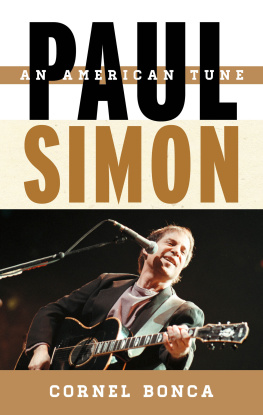
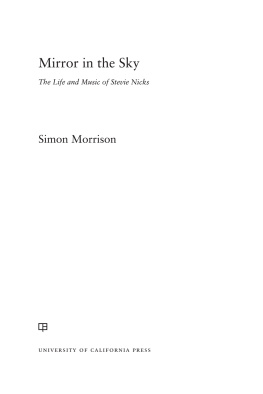
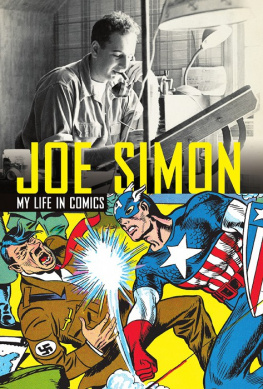

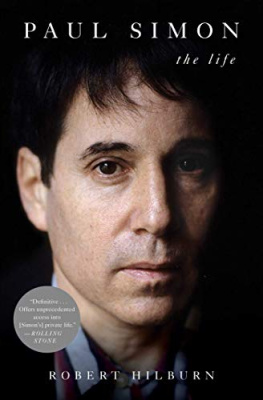
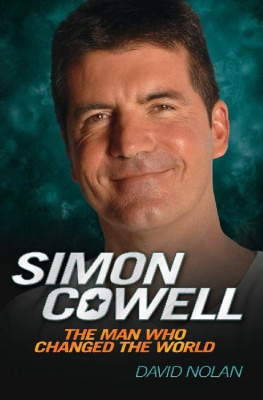

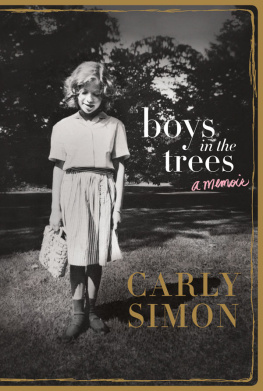
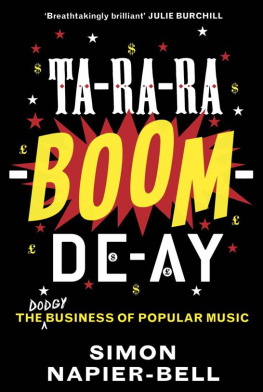
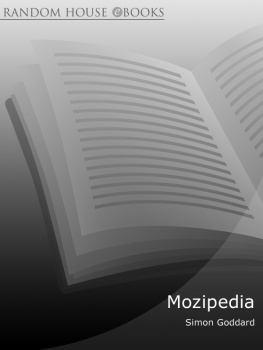
 TM The paper used in this publication meets the minimum requirements of American National Standard for Information Sciences Permanence of Paper for Printed Library Materials, ANSI/NISO Z39.48-1992.
TM The paper used in this publication meets the minimum requirements of American National Standard for Information Sciences Permanence of Paper for Printed Library Materials, ANSI/NISO Z39.48-1992.